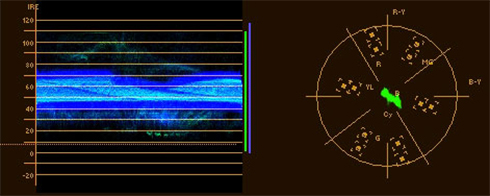
Video Essentials: How to Read a Vectorscope and Waveform Monitor
Share
Premiumbeat by Danny Greer
 Whether you’re shooting in the field or editing/grading in post, it is essential to use the video scopes to get the best, consistent images.
Whether you’re shooting in the field or editing/grading in post, it is essential to use the video scopes to get the best, consistent images.
In this post we’ve rounded up 3 resources to answer a common video question “How do I use a vectorscope and waveform monitor?” For my first few years in professional video production I wasn’t sure how to properly use the scopes…quite frankly, they can be intimidating. But, as soon as you get a handle on how to integrate video scopes into your image capture and post production work, you may wonder how you did without them before.
Two of the most useful video scopes are the vectorscope and the waveform monitor. The vectorscope is used to measure the color information in a video image, while the waveform displays the brightness, or luminance, of a shot. Because everyones eyes see differently, scopes are useful to provide a quantitive way to evaluate a shot. On set, color scopes, like the vectoscope and waveform, are useful for calibrating multiple cameras – ensuring greater consistency between shots. In post, they are essential for color grading video footage.
So, how do YOU use color scopes? Let’s jump in…
In this Lynda.com tutorial you’ll learn how to read a waveform monitor and adjust your footage in post to optimal luminance levels. The example demonstrates using the waveform scope in Premiere Pro, but the fundamentals and techniques are applicable for any waveform monitor or video editing application. read more...
